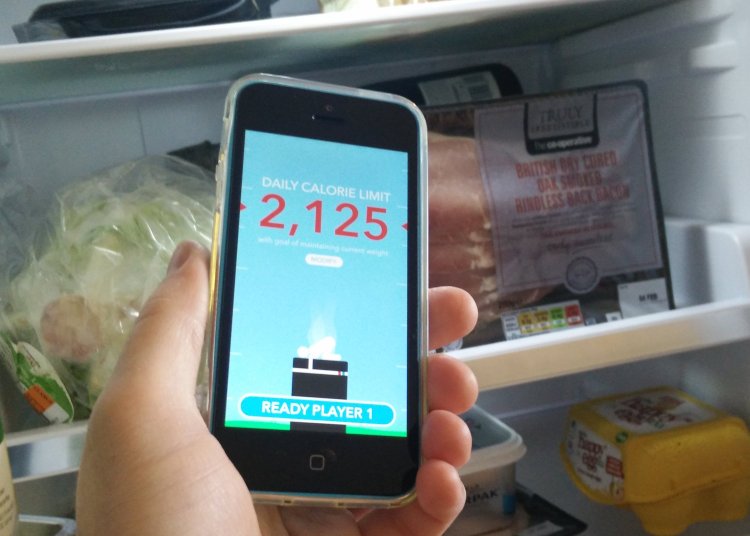Location, location, location.
No, it’s not the old adage of real estate — it’s the new “last mile” of advertising. While e-commerce and m-commerce are growing fast, old-fashioned bricks-and-mortar purchasing is still 93 percent of all retail sales. Which means that brands and companies that want to address the bulk of consumer spending still need to think hard about local.
 Mobile advertising platform Verve Mobile, which bills itself as a “location-based mobile platform,” announced this morning that it has purchased beacon technology platform Fosbury. The goal, it says, is to further link mobile marketing to offline retail performance.
Mobile advertising platform Verve Mobile, which bills itself as a “location-based mobile platform,” announced this morning that it has purchased beacon technology platform Fosbury. The goal, it says, is to further link mobile marketing to offline retail performance.
“Fosbury’s Apple Passbook, Google and Samsung wallet capabilities augment the success and scale of retailers’ marketing and loyalty programs by allowing businesses to advertise their presence to nearby smartphones,” Verve president Tom Kenney said via email. “The Fosbury acquisition allows Verve to integrate Passbook and Wallet functionality as one of our key secondary actions into all of our mobile advertising campaigns, driving more in-store customer engagement and sales.”
In other words, Fosbury isn’t just about beacons.
It’s also about mobile coupons, and what that means is that a mobile ad can now include a coupon which will live on your phone in your mobile wallet. (Apple just renamed Passbook to Wallet, perhaps following Google’s lead.)
VB’s new Brands & Mobile Advertising: How to win report is available for
$499 on VB Insight, or free with your martech subscription
That’s not just a nice call-to-action or the digital equivalent of clipping a coupon. That’s an active app-like functionality which will ping you when you go near the store at which you can redeem it.
This might be more important than the iBeacon part of Fosbury’s business. Bluetooth beacons are interesting technology, to be sure, but have not really hit their sweet spot. To even register them, consumers need to have the right app on their smartphones, and need to enable specific permissions, both of which limit their broad appeal.
 That said, Fosbury has relationships with about 20 beacon manufacturers whose products are in malls all over the U.S. and beyond. And, Kenney said, Verve Mobile itself brings its own network: Its SDK is embedded in 10,000+ apps, reaching 160 million people monthly.
That said, Fosbury has relationships with about 20 beacon manufacturers whose products are in malls all over the U.S. and beyond. And, Kenney said, Verve Mobile itself brings its own network: Its SDK is embedded in 10,000+ apps, reaching 160 million people monthly.
Kenney said that together, one plus one will equal three:
“Now, not only do we have a hand in securing that opt-in, this acquisition gives us the opportunity to take action on that opt-in when that consumer is near or inside a store. This is exactly why Fosbury’s technology fits so nicely with what we are already doing.”
That makes the beacon story stronger, no doubt.
That said, the big win here immediately might be the mobile coupons. Brand advertisers are just starting to hit mobile advertising hard, and they are all looking for ways that not only amplify their brand message but also show the often-elusive but always-desired engagement. Looking at an ad is one thing; interacting with it is another. And selecting a mobile coupon that then downloads to your local device is not only a strong engagement signal, it’s a strong buying signal.
Which is why, of course Adobe and Vibes went down this path in March of this year.
At the time, I wondered who actually uses mobile coupons. It turns out that while adoption is still early, automotive retailer Pep Boys generated seven-figure results via mobile coupons saved to digital wallets. And the Men’s Wearhouse increased coupon redemptions 10 times when adding a mobile wallet component to emails.
So there’s definitely some consumer behavior here that will likely only increase as we continue to move to digital from flyers or circulars.
Another benefit of the Fosbury acquisition: measuring in-store results from mobile advertising campaigns.
“We have successfully driven foot traffic for retailers for years, yet the limitations of indoor mapping technology prevented retailers from measuring the impact mobile ads had on in-store sales,” said Kenney. “As a result of this acquisition, advertisers can now connect mobile ad exposure to completed transactions with pinpoint accuracy, utilizing location data to determine a shopper’s physical trajectory through point-of-sale and to definitively close the loop.”
Terms of the acquisition were not released.
VentureBeat is doing a mobile advertising and brands roadshow presenting our latest research in NYC on June 16. Sign up to attend here.
VentureBeat's mission is to be a digital town square for technical decision-makers to gain knowledge about transformative enterprise technology and transact. Learn More


